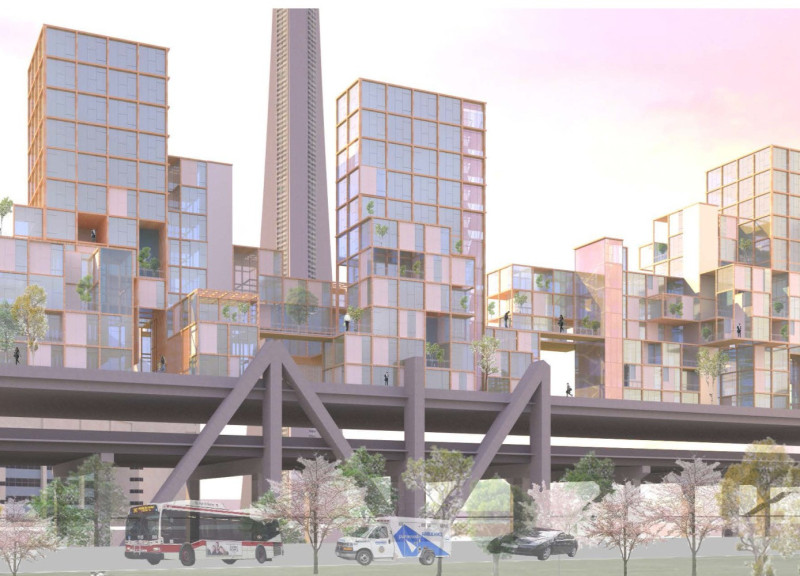5 key facts about this project
Functionally, the Co-Living Pods serve as a multifamily residential solution designed to reduce the strain of rising housing costs in urban environments. The architecture reflects a commitment to maximizing space utilization while ensuring that residents have access to essential amenities. Each pod is equipped with basic living necessities but includes ample shared facilities such as kitchens, lounges, and recreational areas designed to encourage socialization. This functional layout is particularly relevant as it not only addresses individual needs but also provides communal spaces that enhance community engagement and interaction.
The design of the Co-Living Pods is notable for its innovative modular structure that allows flexibility and adaptability in residential layouts. This architectural approach enables the integration of various unit types within the same building, catering to different family structures and lifestyles. The use of modular components simplifies construction while maintaining high design standards. This flexibility is a crucial aspect of the project, allowing for easy adaptation as community needs evolve over time.
A distinctive feature of the Co-Living Pods is its strategic integration of green spaces. The architecture thoughtfully incorporates roof gardens and vertical terraces, creating naturalistic elements that contribute to environmental sustainability. These green areas not only improve the aesthetic appeal of the building but also enhance biodiversity within an urban context. By focusing on creating outdoor spaces that residents can enjoy, the project encourages a healthy lifestyle and promotes outdoor activities among the residents.
The materials selected for the Co-Living Pods further reflect both contemporary architectural trends and a commitment to sustainability. Glass is extensively used in the facades to facilitate natural light, creating bright and welcoming interiors while allowing residents to visually connect with the surrounding cityscape. Wood features prominently in interior spaces, introducing warmth and comfort into the design. Concrete provides the necessary structural support and durability, ensuring that the buildings can withstand urban challenges. Metal accents contribute a modern touch and serve functional purposes in both safety and design elements.
Ultimately, the Co-Living Pods project is characterized by a comprehensive understanding of modern urban living and the specific challenges that arise within dense city environments. The thoughtful arrangement of private and communal spaces, combined with a strong emphasis on sustainability, distinguishes this project within the architectural landscape of Toronto. The balance of individual privacy with communal engagement provides a model for future housing developments, demonstrating that it is possible to create environments that meet diverse residential needs while fostering strong community ties.
For readers interested in exploring the architectural details further, including architectural plans, sections, designs, and innovative architectural ideas presented in the Co-Living Pods project, additional resources will provide deeper insights into its design philosophy and implementation. Engaging with these elements will reveal the thoughtful craftsmanship and intentional design decisions that underpin this significant contribution to urban housing in Toronto.























